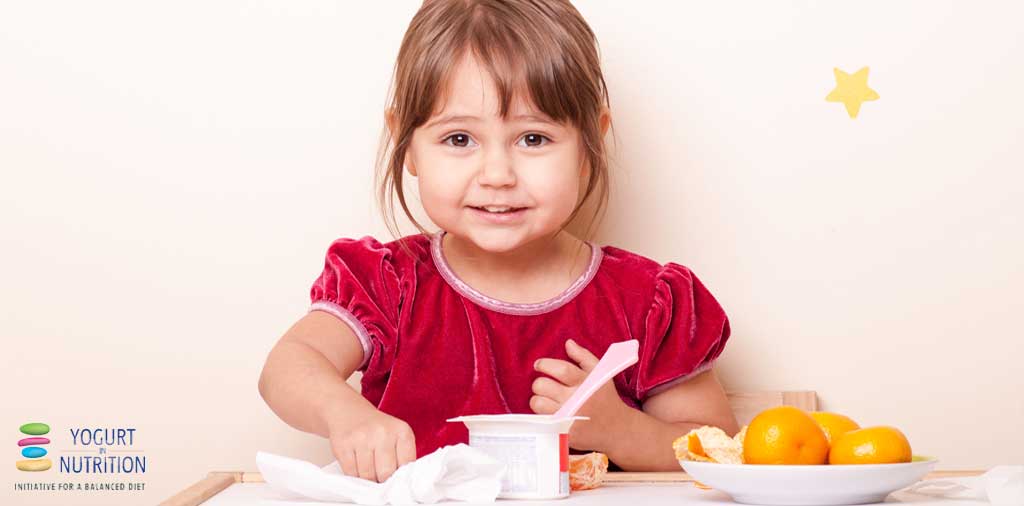Cow’s milk allergy can be a miserable experience for small children, causing symptoms from eczema to vomiting or wheezing. The good news is that many youngsters grow out of it – 80% of those with cow’s milk allergy can tolerate it by the time they reach about 3 years old. And even better news has come from this latest study showing that many children who are allergic to cow’s milk can tolerate yogurt – and so don’t have to risk missing out on all the healthy nutrients contained in dairy products.
Cow’s milk allergy is the most common food allergy in childhood, and the numbers of sufferers are on the rise. The usual treatment is to avoid milk completely. However, recent research suggests this may not always be necessary, as the allergic characteristics of food can change during food processing or heating.
It’s the proteins in a food that cause the allergic reaction, the body’s immune system mistaking them for a threat. The cow’s milk protein acts as an antigen which binds with immunoglobulin E (IgE) antibodies in the body.
For some people, tolerance to a food can develop by cooking or other processes which can change the structure of certain proteins. That’s why some children who are diagnosed with a cow’s milk allergy can tolerate cakes, cookies, and other products made with cooked milk.
Children challenged with yogurt, a fermented product
Yogurt is made by fermentation of cow’s milk which may also change the structure of the dairy proteins. The authors of this study used food challenge testing to see whether children with cow’s milk allergy could tolerate yogurt without all the troublesome allergic symptoms.
This study was carried out in Turkey, from where the word ‘yogurt’ originates, and where as much yogurt is consumed as milk. It involved 34 children with a mean age of 2 years who were found to have cow’s milk allergy through a variety of diagnostic tests, including a cow’s milk challenge test, IgE measurement, and a skin prick test. Children who showed allergic symptoms, such as urticaria, eczema, itching, diarrhoea, vomiting, wheezing, and conjunctivitis, in response to an oral food challenge test with cow’s milk were included in the study. They were excluded if they had a history of anaphylaxis to cow’s milk.
After 15 days, the children had another food challenge test this time with yogurt.
Many of the children tolerated yogurt
Results showed that 50% of the children tolerated the yogurt, showing no symptoms of allergy in response to a challenge test with yogurt.
‘… half of the children who had been diagnosed with a cow’s milk allergy tolerated yogurt. This was shown by a food challenge test that we performed with yogurt, which is derived from fermented milk.’ – Küçükosmanoğlu E
There were no differences between those children who did and those who did not tolerate yogurt in age, gender, whether and how long they had been breast-fed, yogurt consumption, or allergic symptoms caused by cow’s milk.
However, children with a bigger response to the allergy skin test with natural milk and yogurt – as shown by a larger diameter of swelling following the test – tended to tolerate yogurt less than children with a small diameter of swelling following this skin test.
‘Our study also showed that development of tolerance was significantly lower in children with a high level of cow’s milk-specific IgE.’ – Küçükosmanoğlu E
Why can some children tolerate yogurt but not milk?
Milk proteins comprise 80% casein and 20% whey, each type made up of different parts. They respond differently to processes; for example, casein proteins are more heat-resistant than whey proteins. That’s why the allergic characteristics of cow’s milk reduce but don’t completely disappear when it is heated. This has been reflected in studies that have shown that many, but not all, children with cow’s milk allergy can tolerate milk if it has been heated.
The fermentation process used in making yogurt with the bacterium Lactobacillus may also change some of the milk proteins. Hence a previous study showed that the whey proteins became less allergenic in yogurt produced from this fermentation process. Other research showed that the allergy-inducing characteristics of both whey and casein proteins were reduced by the process of fermentation with Lactobacillus for making yogurt.
Find out more: read the original article.
Source: Küçükosmanoğlu E, Özen E, Eltan SB et al. Most children who are allergic to cow’s milk tolerate yogurt. J Int Med Res. 2018 Aug 9



